
Knowledge Management through Documentation
|
October 16, 2025
|
How to Create Step by Step Instructions with Screenshots Effectively
Overview
You might be wondering how to create effective step-by-step instructions with screenshots. Well, it all starts with defining clear objectives and understanding your audience's experience level. Gathering the necessary resources and incorporating visual aids is key, too! And don’t forget to continuously review and iterate based on feedback.
The article backs this up by showing that well-defined goals can really enhance team performance. Plus, visuals? They can significantly improve task completion efficiency. And if you want to take it a step further, user testing can boost the effectiveness of your instructional materials. So, why not dive into these strategies and see how they can transform your documentation process?
Key Highlights:
- Clearly defined objectives enhance team understanding and performance, with 85% of participants agreeing on its impact.
- Understanding the audience's experience level is crucial for tailored documentation, requiring ongoing analysis.
- Gathering necessary information and resources, including existing documents and expert insights, is essential for effective instructions.
- Incorporating visual aids like screenshots and diagrams improves task completion efficiency by 67% and caters to diverse learning styles.
- Reviewing, testing, and iterating on instructional materials based on audience feedback can boost effectiveness by 30%.
Introduction
Creating effective step-by-step instructions is such an important skill in our fast-paced, information-driven world, isn’t it? With the right approach, you can turn complex tasks into clear, actionable guides that really boost understanding and efficiency.
So, what are the key components of crafting these instructions? We’ll explore everything from:
- Defining tasks with precision
- Using visual aids that cater to different learning styles
But here’s a question for you: how can you ensure that your instructional materials not only convey information but also resonate with your audience?
Define the Task Clearly
To kick things off, let’s talk about how to express your objective in a clear and concise way. You might be wondering, what does that even look like? Well, instead of just saying 'manage the project,' try specifying something like 'create a project timeline using the project management tool.' This kind of clarity not only sets the stage for what’s next but also keeps the guidelines focused and actionable.
You see, well-defined objectives are super important for creating thorough records. They cut out the guesswork and help everyone on the team understand what’s going on. In fact, did you know that 85% of participants agreed that having clearly outlined guidelines sped up their performance? That really highlights how crucial clarity is when defining tasks.
Now, let’s dive into why clear records matter. They make training and troubleshooting a breeze for teams, which is essential for effective operations. So, the next time you’re drafting your objectives, remember that a little clarity goes a long way!
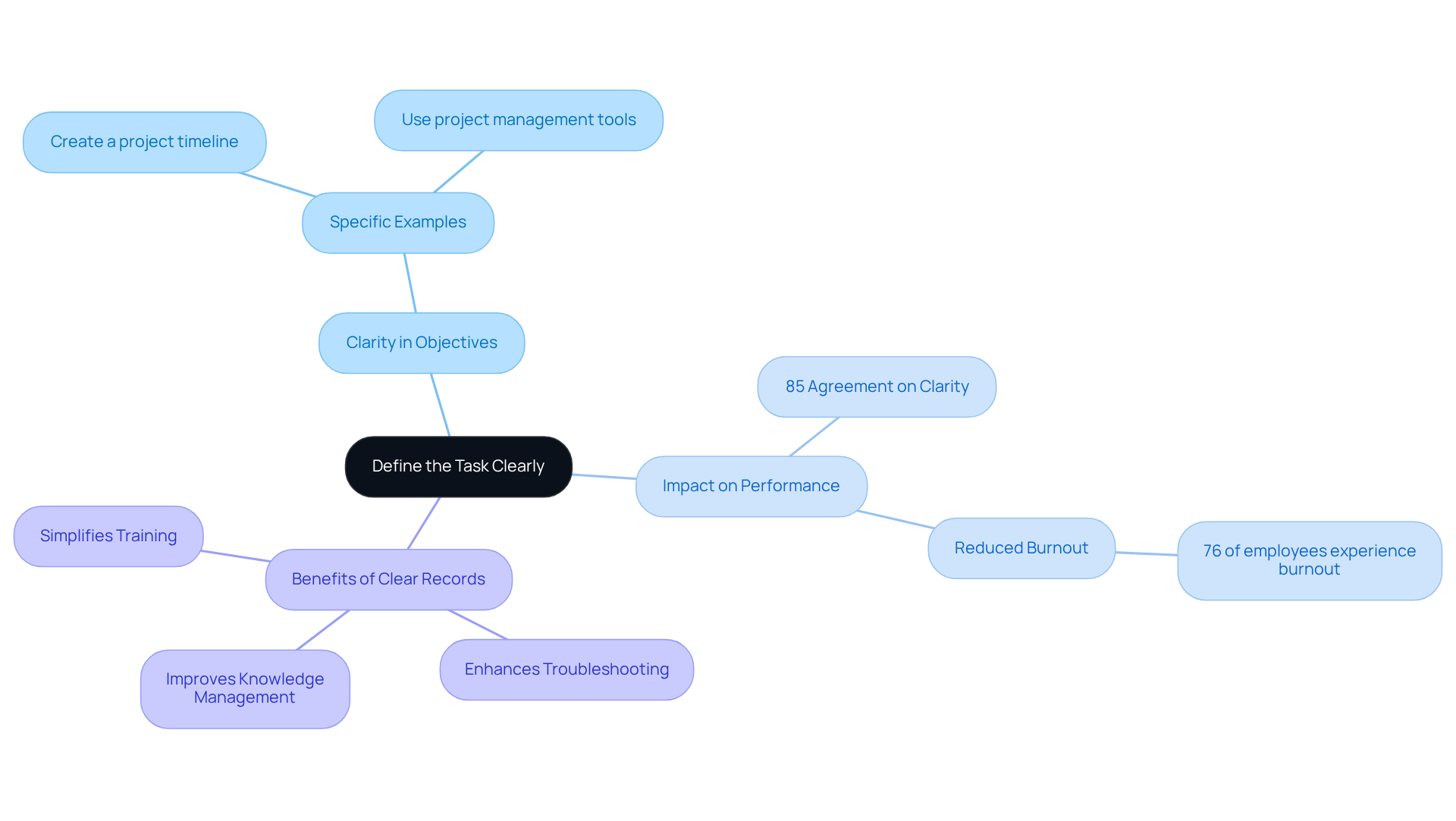
Identify Your Audience
You might be wondering just how important it is to know who will be using your instructions. Well, understanding your audience is key to creating effective documentation! Start by considering their experience level, background knowledge, and specific needs. For instance, if your audience is made up of beginners, it’s a good idea to steer clear of jargon and offer detailed explanations to help them grasp the concepts.
On the flip side, if you’re addressing seasoned pros, feel free to use more technical language and assume they have a solid foundation of knowledge. A fun way to tackle this is by developing personas that represent different segments of your audience. This exercise helps clarify the traits and expectations of your readers, allowing you to tailor your materials just right.
Remember, audience analysis isn’t a one-and-done deal; it’s an ongoing process. Keep an eye on your audience’s needs and adjust your content accordingly to boost satisfaction and ensure your materials remain relevant and impactful. So, what should you consider during audience analysis? Think about:
- Who your audience is
- What they need
- Where they’ll be reading
- When they’ll be reading
- Why they’ll be reading
- How they’ll be reading
By addressing these questions, you can create materials that truly resonate with your audience and meet their diverse requirements.
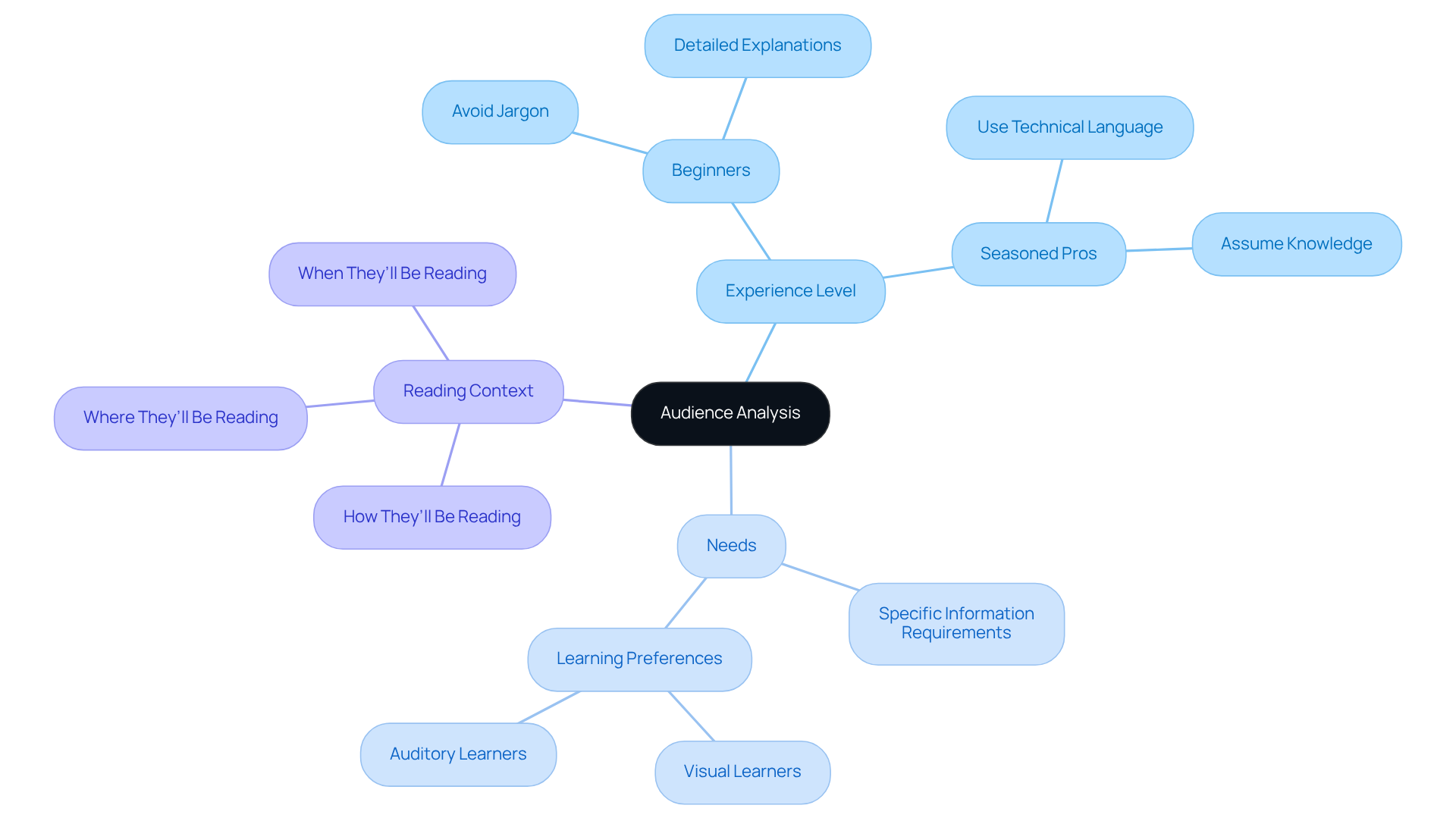
Gather Necessary Information and Resources
You might be wondering where to start with your assignment, right? First things first, gather all the essential information you’ll need. This could be anything from existing documents and instructional manuals to insights from experts in the field.
And don’t forget about the tools or resources that will help you get the job done! For instance, if your task involves using specific software, make sure you have access to it along with any guides or tutorials that could come in handy.
Recording all this information will really help you understand how to create step by step instructions with screenshots for a comprehensive set of guidelines.
Now, let’s dive into how you can make the most of what you’ve gathered!
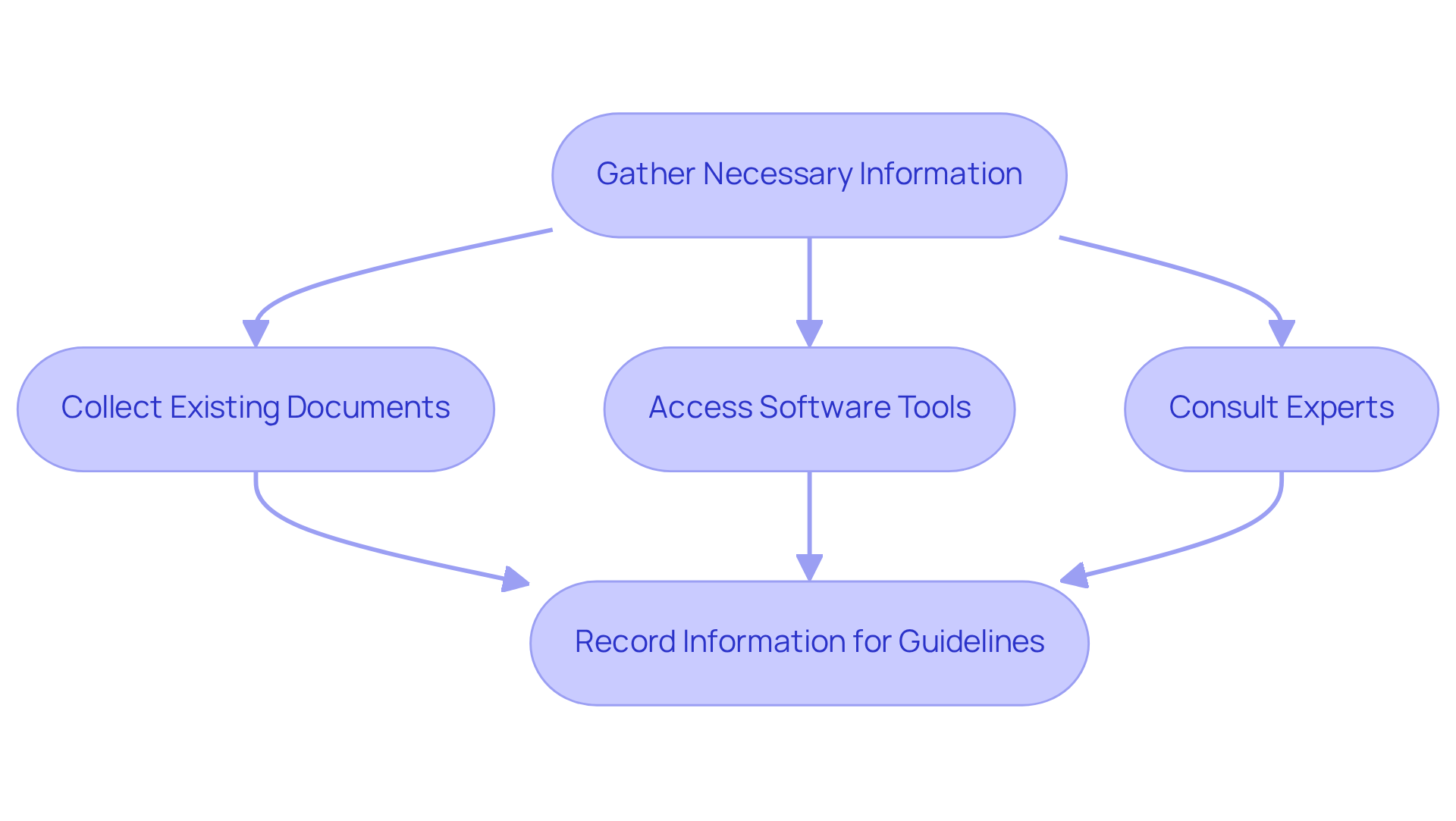
Incorporate Visual Aids for Clarity
You might be wondering how to make your instructional materials pop, right? Well, incorporating visual aids like screenshots, diagrams, and flowcharts is essential when learning how to create step by step instructions with screenshots for better clarity! Imagine guiding someone through a software interface; knowing how to create step by step instructions with screenshots that highlight important buttons or sections can really boost understanding. Each visual should be clearly marked and linked to the corresponding step in your guidelines on how to create step by step instructions with screenshots, which helps folks visualize the process easily.
Research shows that 67% of people complete tasks more efficiently when they have visual instructions instead of just text. Pretty cool, huh? Plus, visuals simplify complex info and cater to different learning styles, making your content way more accessible. Effective examples of how to create step by step instructions with screenshots and diagrams can turn your guides into engaging resources, ensuring that users can follow along without any confusion. So, by adding these visual elements strategically, you're not just enhancing your content; you're also demonstrating how to create step by step instructions with screenshots, making the whole experience more engaging and easier to navigate!
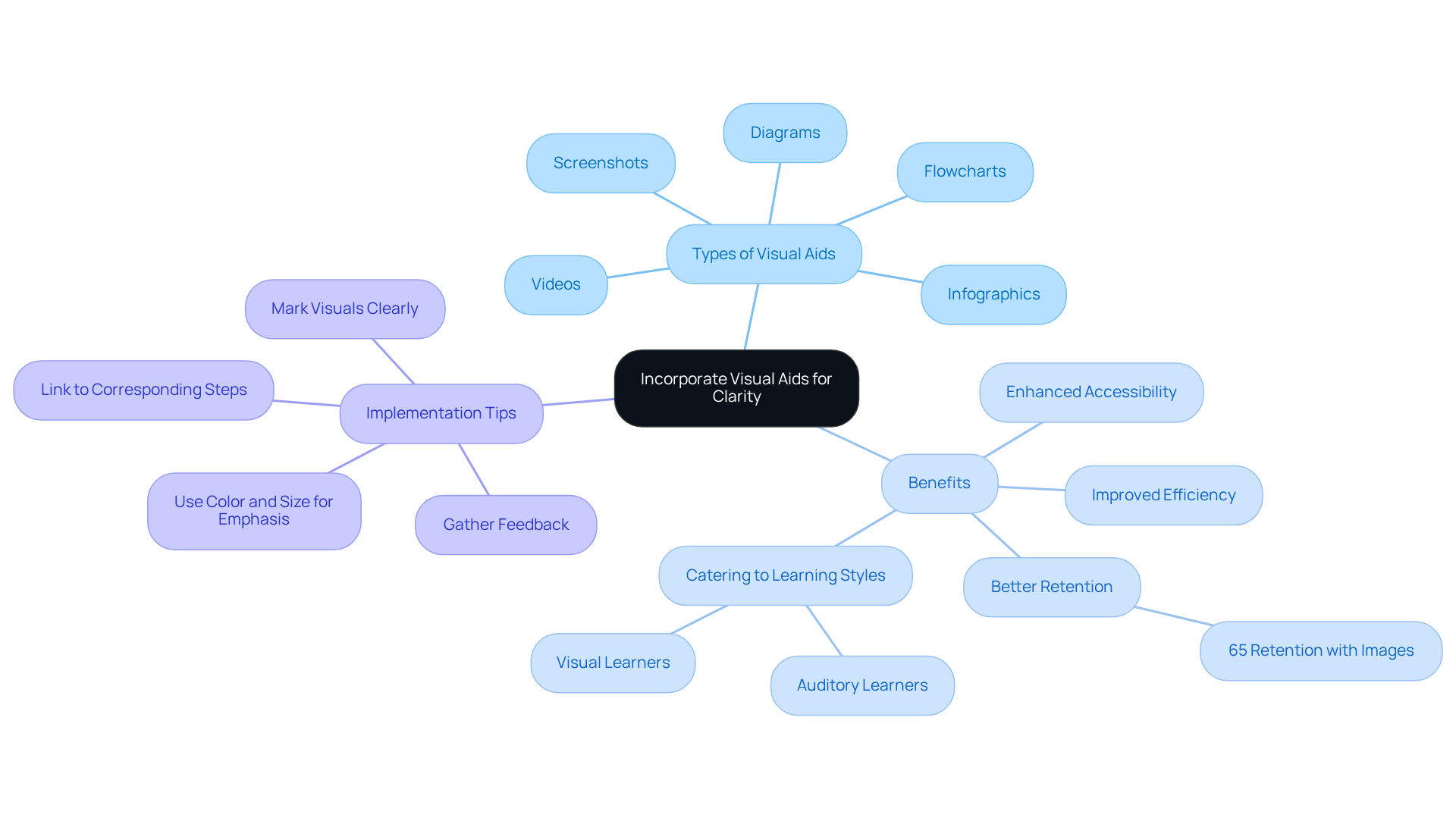
Review, Test, and Iterate for Effectiveness
After you’ve prepared the guidelines, you might be wondering how to ensure they really hit the mark. It’s super important to carry out a thorough assessment that focuses on clarity, accuracy, and completeness. Engaging someone from your target audience to test the instructions can uncover areas of confusion or difficulty that might not be obvious to you. Collecting feedback from individuals is key; research shows that integrating insights from participants can boost the effectiveness of your written materials by 30%!
As Martina Stojmanovska points out, "Regular analysis of these metrics contributes to the continuous improvement of software testing processes, making it easier to adapt and optimize testing methods." This iterative approach not only polishes the guide but also makes sure the final product is user-friendly and impactful.
By consistently adapting based on feedback, you and your team can create instructional materials that really resonate with people and enhance their overall experience. Plus, keeping an eye on metrics like defect detection percentage can give you valuable insights into how effective your iterative approach is, ensuring your documentation meets user needs effectively.
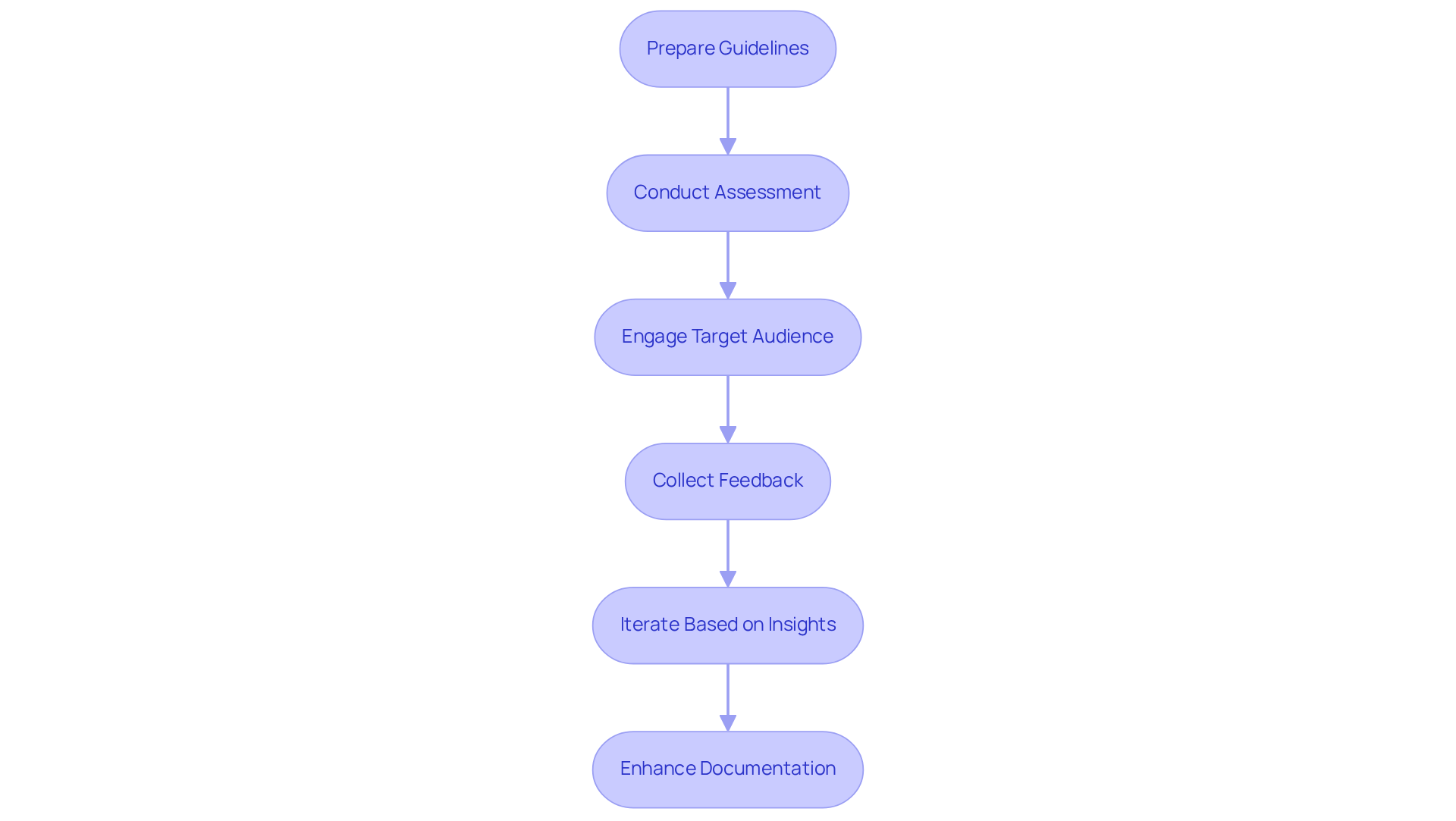
Conclusion
You might be wondering how to create effective step-by-step instructions that really resonate with your audience. Well, it’s all about taking a thoughtful approach that puts clarity and understanding front and center. By breaking down tasks clearly, knowing your audience’s needs and skills, and adding some handy screenshots, your instructional content can become not just more engaging but also way more effective at guiding users through various processes.
Let’s talk about some key strategies! First off, defining tasks with precision helps clear up any confusion. Then, tailoring your content based on audience analysis boosts comprehension. And don’t forget about those visual elements—they’re perfect for supporting different learning styles. Plus, regularly reviewing, testing, and refining your materials keeps them relevant and user-friendly, which is crucial for enhancing the overall effectiveness of your guidance.
As the world of instructional design keeps evolving, embracing these best practices can really elevate the quality of your documentation. By focusing on clarity, engaging your audience, and committing to continuous improvement, you can create instructions that not only inform but also empower users. So, let’s prioritize these elements and inspire confidence in users as they tackle complex tasks!
Frequently Asked Questions
Why is it important to define tasks clearly?
Defining tasks clearly is essential because it sets specific objectives, eliminates guesswork, and helps the team understand what needs to be done. Well-defined objectives also contribute to improved performance, as evidenced by 85% of participants agreeing that clear guidelines sped up their work.
How can I express my objectives more clearly?
Instead of vague statements like 'manage the project,' you should specify actionable tasks, such as 'create a project timeline using the project management tool.' This clarity helps keep guidelines focused and actionable.
What are the benefits of having clear records?
Clear records facilitate training and troubleshooting, which are vital for effective operations. They help ensure everyone is on the same page and streamline processes.
Why is it important to identify your audience when creating documentation?
Identifying your audience is crucial for creating effective documentation because it allows you to tailor your content to their experience level, background knowledge, and specific needs. This ensures that the material is relevant and understandable for the intended readers.
How can I determine the needs of my audience?
To determine your audience's needs, consider their experience level, what they need to know, where and when they will be reading your material, why they will be reading it, and how they will be reading it. Addressing these questions helps create content that resonates with your audience.
What is the benefit of developing personas for different audience segments?
Developing personas helps clarify the traits and expectations of different segments of your audience, allowing you to tailor your materials effectively. This exercise enhances the relevance and impact of your documentation.
Is audience analysis a one-time task?
No, audience analysis is an ongoing process. It's important to continually monitor your audience's needs and adjust your content to ensure it remains relevant and impactful.
👍
What others are liking
5 Steps to outline your ideal documentation structure
5 MINS READ
Where to start the your journey of mapping out your ideal documentation structure, aligning it with the very heartbeat of your organization?
Defining a winning level of detail in your process
3 MINS READ
What is too much detail, and what is too little? This article described in that winning level detail about what detail is enough.





